

The New Medieval: Substance over Surface
The essence of the past has an undeniable grip on our present. It influences our cultural narratives, shapes our aesthetics, and provides context to our current paradigms. One such era, the medieval period, is often viewed through the lens of romanticism: a time of knights, fortified castles, and grand cathedrals. But what happens when we reimagine these symbols, architectural styles, and design elements in today’s context? This is where the “New Medieval” enters – a fresh take on the aesthetics of a dark and forgotten era, reinvigorated in modern design.
A trip down memory lane, facilitated by Architectural Digest’s piece “Middle Ages Modern” by Dana Covit, reveals a trending inclination towards designs reminiscent of the Middle Ages. Stark lines, rustic touches, symbolic representations, and gothic undertones seem to be replacing the minimalistic designs that have dominated the scene.
The New Medieval is best described as a blend of raw, unfiltered aesthetics punctuated with intricate designs. Central to this style are natural materials and a hefty dose of metalwork, lending it a certain brutalist and rustic vibe. The approach, which places function at the helm, embodies imperfection, making it even more appealing. It’s as if symbols, reminiscent of medieval heraldry, have found a renewed purpose in modern design. There’s an enchanting darkness, a dance of shadows, and a narrative that is both powerful and evocative.
Designers and Pieces Defining The New Medieval
Designers on Adorno seem to have grasped the essence of the New Medieval trend. Let’s delve deeper into some of the standout pieces and designers that echo this unique blend of old and new.


T SW Book Shelf by Mantas Lesauskas
At the heart of Mantas‘ designs is the understanding that objects speak a language of love and purpose. The “Slipcover” exhibition boasts of designs that on the surface may appear rigid and unyielding. Brushed aluminum and limed oak create an ambiance that speaks to a militaristic gothic vibe. Yet, there’s an underlying softness, a tenderness. These objects become keepers of stories, providing support in all life’s phases. The soulful shimmering curtain in the backdrop seems to blur the lines between reality and fantasy. In these designs, the juxtaposition of rigidity and suppleness offers a fresh perspective to furniture design reminiscent of medieval solidity.




The Drago Nero by COSEINCORSO
The past is a rich source of inspiration. The Drago Nero takes cues from drug pots of Castelli that were intricately designed for wedding trousseaus. The six-dragon-head ceramic is not just a pot; it’s a reinvention, a reinterpretation. Hand-thrown and hand-molded, the darkened original decor is a nod to the artistic sensibilities of the medieval craftsmen.




Maratus Horsehair Light Fixture by Isabel Moncada
Lighting that tells tales. The Maratus, named after a spider, embodies elements of darkness and myth. The contrasting use of dark bronze pieces and ethereal horsehair tassels beckons one to the world of gothic designs, where beauty often resides in the mysterious and the haunting.




Project 213A
The Portuguese studio, Project 213A, has recently pivoted into this more organic and rustic design language. Their recent walnut Accent Chair, resting on three irregular hand-carved legs, exudes an ancient aura. This along with their new ceramic side tables are reminiscent of primitive design crafted out of necessity using available materials and resonates with the essence of medieval functionality.






Chainmail by Panorammma Atelier
A masterpiece that reimagines the 1952 “T-Chair” by William Katavolos, this chair is a testament to the enduring allure of the past. Its seat, made up of hand-linked metal rings, is reminiscent of a knight’s chainmail armor. The design channels Felix Guattari’s concept of “a body without organs”, a body ever-evolving, ever-fluid, echoing medieval resilience and adaptability.






ZTISTA by FAINA
Drawing from a technique similar to the Ukrainian craft of valkuvannya, the ZTISTA pieces by FAINA are made of a unique blend of materials like cellulose, clay, and flax fiber, which radiates warmth and organic beauty. Each piece, crafted by hand, has its distinctive rural feel much like the individualistic designs of medieval times.


“Whisper” Bench by Caroline Kable
A stone slab etched with a poem is a poetic and dark tribute to the inscriptions and hymns of the old world. The words, almost like an ancient chant, draw one into introspection, a moment of connection between the past and the present.


Piloti Side Table by Maitoinen Home
The Piloti side table is inspired by the architectural terminology “Noun”. A column of iron, steel, or reinforced concrete supporting a building above an open ground level.
With its three legs, constructs a new visual relationship with the beholder. While conventional side tables have four legs, it brings equality to the forces of gravity on three legs.
Euclidean geometry “Little sphere” is selected for the turned wood leg in order to bring an appealing look to the lower part of the side table.


Forged vessel by Mark Malecki
This vessel evokes images of a medieval blacksmith at work. Handmade from solid steel and brass, it is a celebration of traditional forging techniques, combined with a modern aesthetic.


OO+II Aluminum Chair by Kiki Goti
A union of the cold and the warm, this aluminum lounge chair is a playful exploration of design. The addition of a side table or stool made of wood provides a perfect balance, capturing the essence of the New Medieval in its embrace of contrasts.
The New Medieval, as showcased by Adorno, reiterates that our history isn’t just a series of events; it’s a reservoir of inspiration. While creating a noticeable contrast to the candy-colored minimalism that has dominated recent years. To understand its rise, we need to uncover the underlying cultural and societal shifts that have paved the way for this return to medieval authenticity.
A Rebuttal to Pastel Modernism
Recent years have seen a surge in pastel colors, often termed ‘millennial pink’ and its cohorts, in design spheres. These colors, while evoking a sense of calm and minimalism, often felt superficial to some, lacking depth or historical significance. The New Medieval, with its dark, gothic undertones, serves as a counterbalance. There’s an enchanting dance of shadows and narratives in medieval-inspired designs. This movement is not just about aesthetics; it’s a response, a yearning for substance over surface.
The Quest for Authenticity
In an era marked by digitization, where virtual realities often overshadow tangible experiences, there’s a growing desire for authenticity. The raw materials, imperfect finishes, and symbolisms intrinsic to the New Medieval style provide a touch of genuineness. They echo a time when craftsmanship was revered, and every piece had a story. This design approach rekindles a connection to our roots, offering a sense of grounding in an otherwise fleeting digital age.
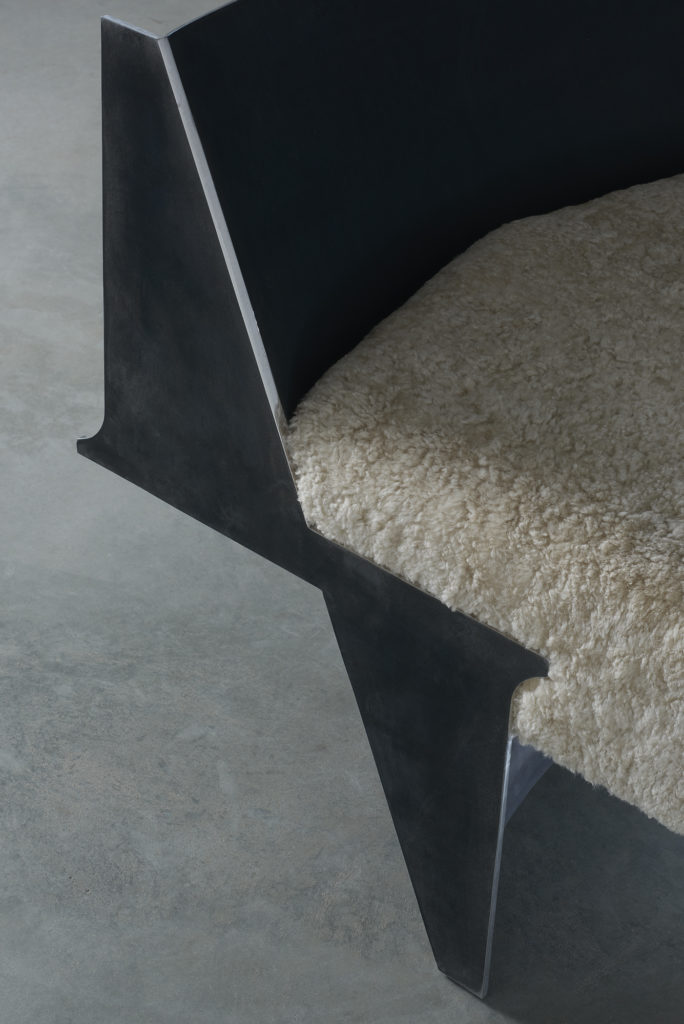





Abstract Form Study in Black
An Age of Global Upheaval
The world today is experiencing significant socio-political upheaval. Against such a backdrop, there’s comfort in drawing from the past. The medieval era, marked by its own set of challenges and revolutions, serves as a reminder that societies have faced tumultuous times and endured. The rustic and brutalist designs, which are hallmarks of the New Medieval trend, symbolize resilience, fortitude, and the ability to withstand adversities.
A Mainstay in Design?
As with all trends, their longevity is always a topic of debate. However, given the socio-cultural shifts fueling the New Medieval movement, it seems poised to influence design for years to come. The global shift towards sustainability and eco-friendliness further reinforces this style’s emphasis on natural materials and durable craftsmanship.
Designers like Mantas Lesauskas and Panorammma Studio are already setting the stage for the evolution of this style. Their pieces, while rooted in medieval aesthetics, possess a contemporary flair that makes them relevant today and, likely, in the future.
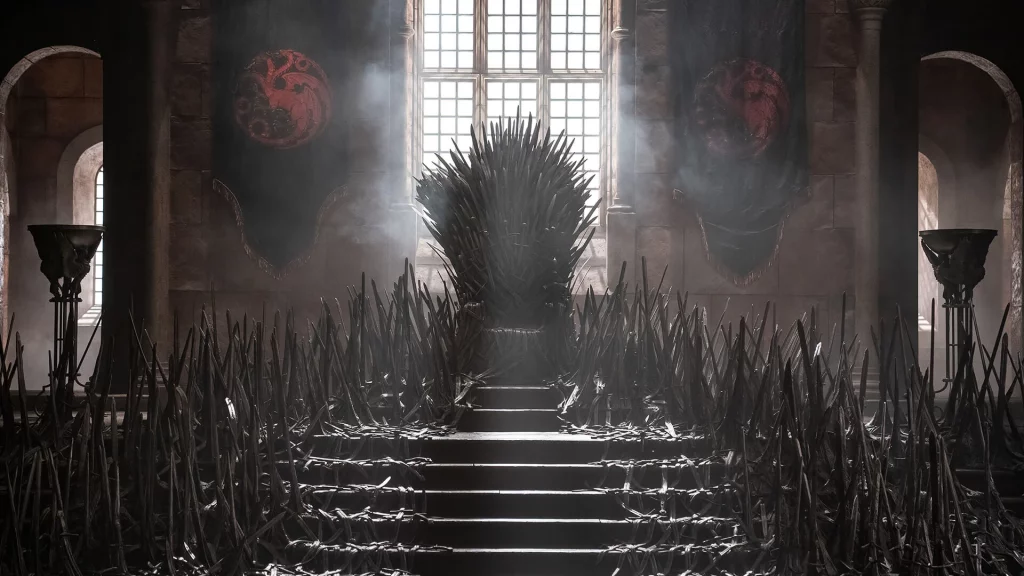

The academic world and pop culture have always played a role in reviving historical periods. Notable publications and television series that delve into medieval themes have contributed to the style’s popularity. Series like “Game of Thrones” and “The Witcher” have brought medieval aesthetics to the forefront of popular culture, sparking interest and curiosity about the era. Meanwhile, academic explorations into medieval craftsmanship and symbolism serve as a rich reservoir for designers seeking inspiration.
Collective Consciousness
The New Medieval is not just a fleeting trend; it’s a reflection of our collective consciousness, a melding of the past and the present. Its growing popularity is a testament to our inherent need to find meaning, authenticity, and resilience in the face of an ever-changing world. As designers continue to innovate within this aesthetic realm and as society further gravitates towards authenticity, the New Medieval’s influence in the world of design seems poised to endure.
Delve into the New Medieval style on Adorno
-

 Head Molten Metal Sculpture€5.250 – €5.400 incl. tax
Head Molten Metal Sculpture€5.250 – €5.400 incl. tax -

 Organ Stool€3.100
Organ Stool€3.100 -

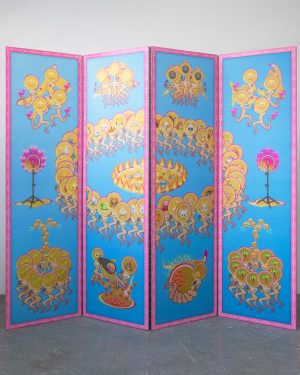 Big Party Room Divider€12.000 incl. tax
Big Party Room Divider€12.000 incl. tax -

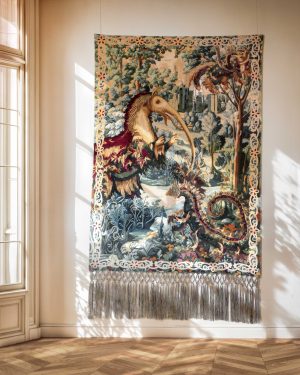 Arquà Manuscript Tapestry I€4.800 incl. tax
Arquà Manuscript Tapestry I€4.800 incl. tax -

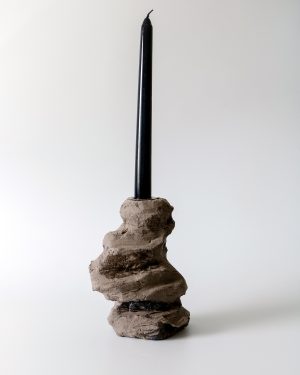 Abyss Candle Holder€102
Abyss Candle Holder€102 -

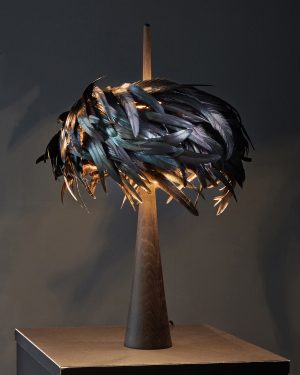 Luna Nova Table Lamp€3.235 incl. tax
Luna Nova Table Lamp€3.235 incl. tax -

 Side Chair€1.315 – €1.550 incl. tax
Side Chair€1.315 – €1.550 incl. tax -

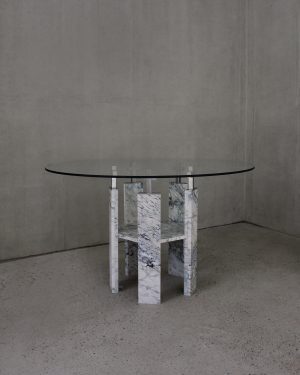 Sanctus Table€9.458
Sanctus Table€9.458 -

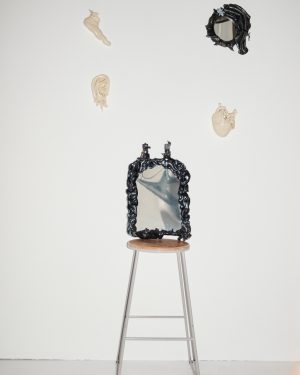 Marana – Ritual Mirror / Hypothetic Obsidian€1.500
Marana – Ritual Mirror / Hypothetic Obsidian€1.500

















